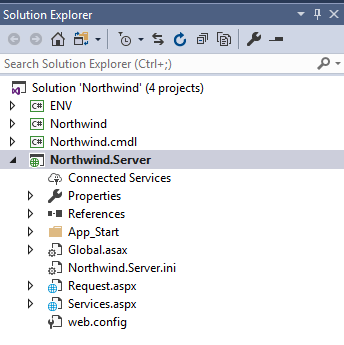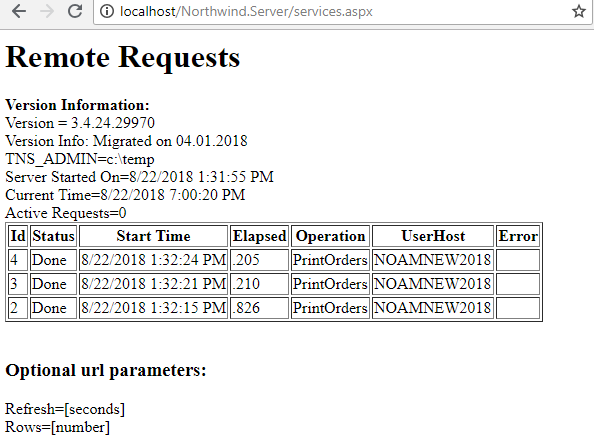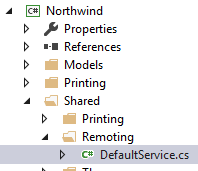Call Remote and Enterprise Server
In magic you had the option to use an Enterprise server that allowed you to run code on the server.
To do that you had to configure a server, run a broker on it and run magic engined to service requests that the server received.
Let's call it the Application Server
To call that server, you would have used CallRemote or mgrqcmdl.exe
In .NET the application server is IIS. IIS replaces the Broker and the engines that you would have run on the server.
In the migration, such application will also have a project called .Server for example Northwind.server.

In that project you would find a file called Services.aspx that manages all of this.
That project is then mapped to a virtual directory on the IIS. See the IIS configuration article
Once you navigate to the Services.aspx URL on the web browser you'll get a small monitor application that allows you to follow up on the server information.

Calling the Server from an Application
For every Service that was defined in the migrated application you'll find a class in `...Shared.Remoting'

Here's it's code:

As you can see - this class goes to the UserSettings class to get the Server's URL based on the Service name from the ini file.
If you'll look into the code of GetApplicationServerUrl you'll see that there are two ways to configure the server URL.
- For simple cases where there is only one server, you can add an entry in the ini called
TemporaryRemoteUrlwith the URL of the services.aspx file.
 2. For more complex cases where you have multiple services, you can add a section in the ini called
2. For more complex cases where you have multiple services, you can add a section in the ini called ApplicationServers and add entries based on the Service Name set in the cs file under the Remoting namespace.

Performing the Actual Call from the code
Calling the service is simply done by Creating a new instance of the Service class and calling it's run method:
new Shared.Remoting.DefaultService().Run("PrintService", "SomeArgument", "Another Argument"); The first argument is the PublicName of the controller as defined in the ApplicationPrograms class. The other arguments are simply sent to that controller.
For more call variations see Call Remote article
Calling a Remote Controller using a command line
You can also call a remote controller using a command line, the CMDL.exe file. See Running cmdl.exe article
Calling a remote Controller using Http
You can also call a remote controlling using simple HTTP - which is very useful for some scenarios. The syntax is similar to calling a web request.
http://localhost/Northwind.Server/services.aspx?prgname=PrintOrders&Arguments=someargument,anotherargument
Help us improve, Edit this page on GitHub
or email us at info@fireflymigration.com
